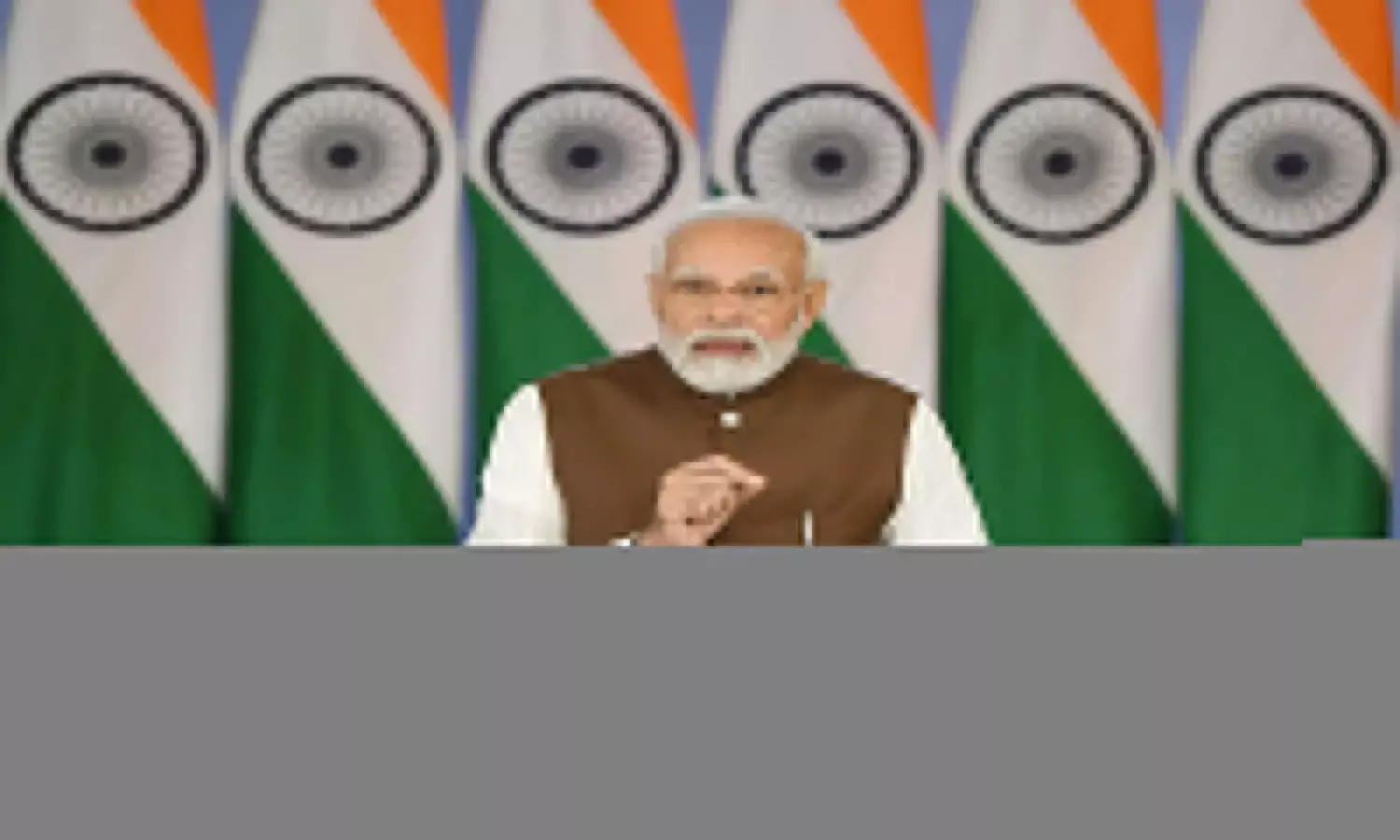PM’s Claim On Rural Internet Users Needs Additional Context
There exists a large digital divide on meaningful internet use, survey data show

Image Credit: Press Information Bureau
On March 22, 2023, the Prime Minister’s official account had tweeted about the spike in the number of internet users in rural India. The PMO’s account claimed that the number had exceeded urban internet users.
“Ab bharat ke gaon mein internet users ki sankhya shehron mein rehne wale internet users se bhi adhik ho gayi hai,” the tweet claimed.
In recent years, India has seen a rapid surge in number of internet users in rural areas. It shows the power of Digital India. pic.twitter.com/Dm5KVGZJIX
— PMO India (@PMOIndia) March 22, 2023
FactChecker looked at data from reports released by the Telecom Regulatory Authority of India (TRAI), Nielsen’s India Internet Report 2023, and Oxfam’s India Inequality Report 2022 - Digital Divide, and found that while the claim is true, there exists a large digital divide on meaningful use of the internet, a factor used by the government to measure digital literacy.
While Nielsen’s survey estimates the number of internet users, TRAI gives the number of internet subscribers and not users. Internet users are individuals using the internet whereas internet subscribers likely includes the count of all internet connections and not necessarily individuals. experts told FactChecker.
TRAI’s data shows that there has been a steady rise in the number of internet subscribers in rural as well as urban areas between January and September 2022--the latest data publicly available--as per its Performance Indicators Quarterly Reports. However, internet subscribers remain lower in rural areas.
Internet Subscribers In India, January-September 2022
Period | Urban Internet Subscribers (in million) | Urban Internet Subscribers per 100 population | Rural Internet Subscribers (in million) | Rural Internet Subscribers per 100 population |
January - March 2022 | 493.08 | 102.82 | 331.81 | 37.06 |
April - June 2022 | 497.56 | 103.27 | 339.30 | 37.86 |
July- September 2022 | 507.13 | 104.77 | 343.82 | 38.33 |
Source: Indian Telecom Services Performance Indicators reports here, here and here
According to Nielsen’s Internet Report 2023, India has 720 million active users aged two years and above as of December 2022, an increase of 11.4% as compared to the previous year (646 million users). “The methodology of the report is composed of a face-to-face systematic stratified random survey across all states and towns/villages of the country. The survey was carried out from November 2022 to January 2023 covering ~160,000 household members across 35,000 households,” Dolly Jha, Managing Director, Nielsen Media, India told FactChecker via email.
Of the 720 million internet users, rural India has 425 million active users (48% of rural population). This is 44% higher than urban India with 295 million users (63% of urban population), the report says. This is also a 21% increase in internet users in rural areas as compared to 2021, from 352 million in 2021 to 425 in 2022.
“There is immense headroom in rural areas for growth with more than half the population in rural areas still to be tapped,” the report stated.
Oxfam’s India Inequality Report 2022: Digital Divide shows a different picture. Only 31% of the rural population uses the internet compared to 67% of urban Indians, the report said. The survey uses a mix of quantitative and textual analysis to understand the factors that lead to disparities in digitisation, based on data from the Centre for Monitoring Indian Economy and the National Sample Survey.
Likewise, another divide is digital illiteracy. “Digital Literacy is the ability of individuals and communities to understand and use digital technologies for meaningful actions within life situations,” according to the Ministry of Electronics and Information Technology. Only a quarter of rural Indians are digitally literate compared to 61% of urban Indians. At 21%, Indians belonging to the Scheduled Tribes have the lowest overall digital literacy at the household level, the report said.
There are some contextual perspectives to consider: The rural population in India stands at 65% of the population as of 2021, as per the Economic Survey 2022-23. Even though there is a massive outreach of connectivity towers and availability, it doesn’t translate into users whose lives are dependent on meaningful conversion of connectivity like using it for education and health, finance, etc., said Osama Manzar, founder and director of Digital Empowerment Foundation, a Delhi-based non-profit organisation.
For instance, in rural areas, the tendency to use financial sources is lowest in Scheduled Tribes households, second lowest for Scheduled Castes and third lowest for Other Backward Classes, the Oxfam report said. The likelihood of a digital payment by the richest 60% is four times more than the poorest 40% in India.
Further, in the radar of connectivity, it is important to consider the speed of the internet, said Manzar. The quality and speed of internet connections in urban and rural areas is questionable, according to Oxfam’s Report.
The report referred to a survey conducted by LocalCircles, a media company. Of the 33,000 responses from more than 319 districts in India to understand the ground situation of internet service, 56% respondents experienced three or more disruptions in their connections each month while 33% said the connection speed received was much lower than what they were paying for.
FactChecker reached out to K. Rajaraman, Chairman and Secretary, Department of Telecommunications, Ministry of Communications, Dr. P. D. Vaghela, Chairman of TRAI and the Prime Minister’s office via call and email regarding the definition and source of internet users and subscribers and the methodology of calculations for both. We will update the story when we receive a response.


